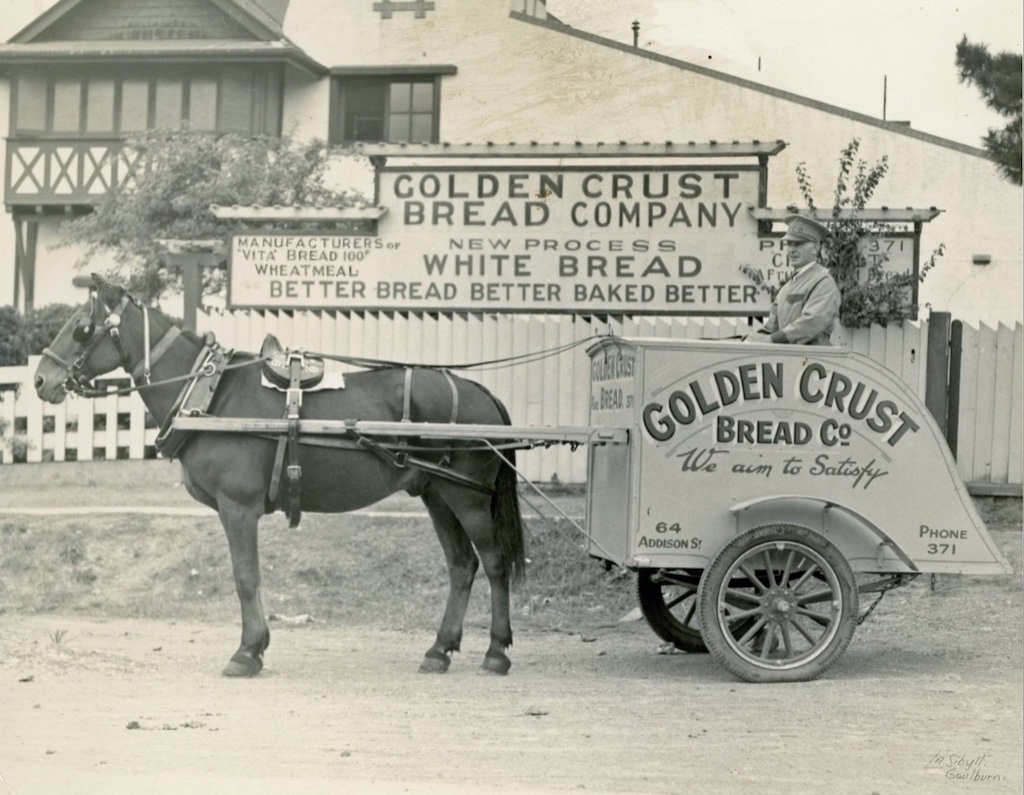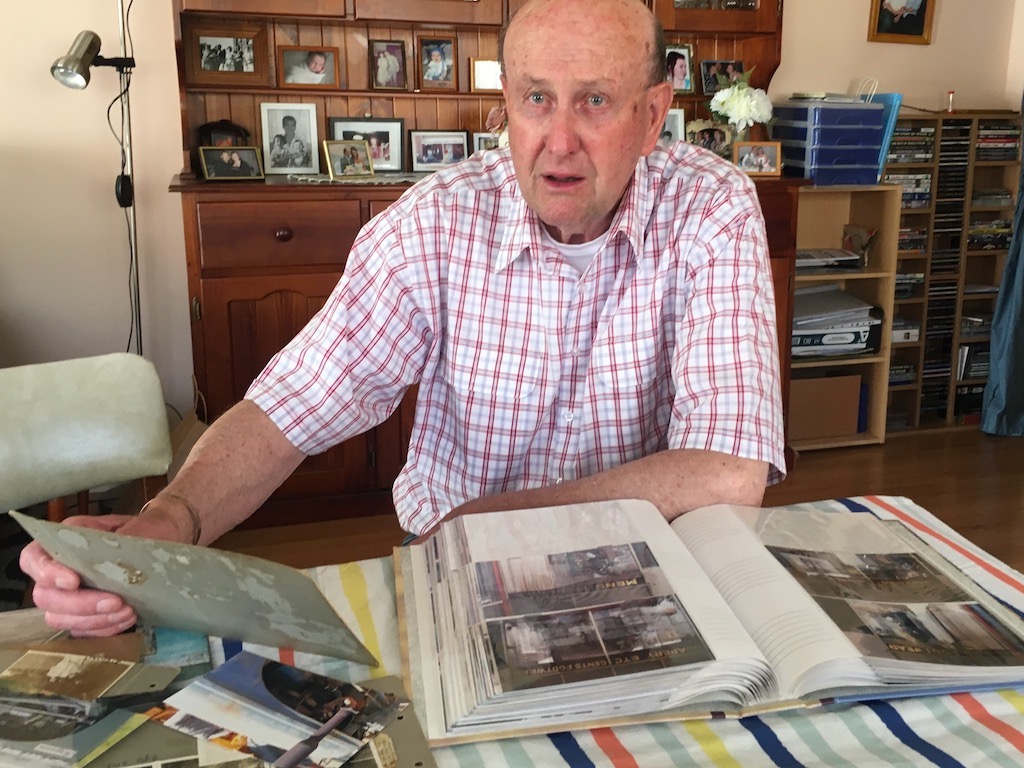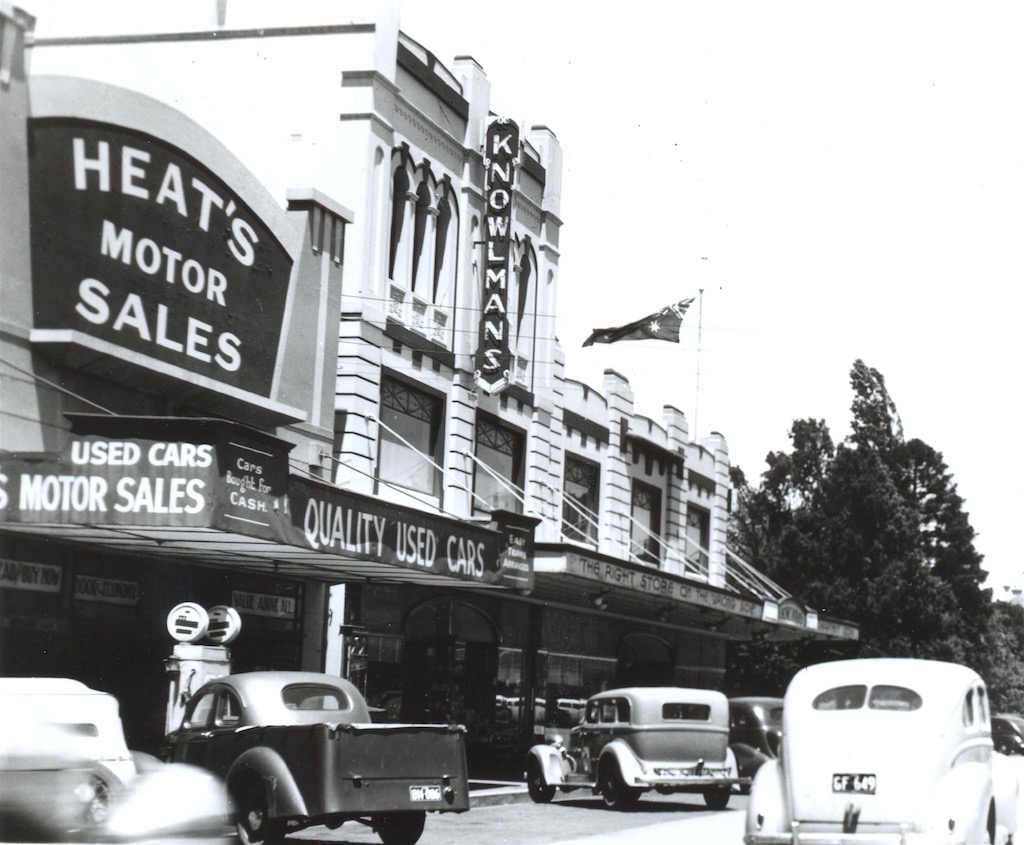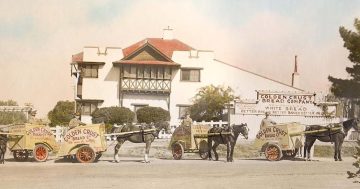
A Golden Crust cart, of the type that often came to Stevenson’s yard for new signage. Photo: Supplied by Linda Cooper.
Growing up, David Stevenson saw Goulburn’s small business community from the perspective of his grandfather Albert, a traditional signwriter.
Albert’s gift for gold leaf lettering meant he was always in demand for reverse writing on shop front windows. He could illustrate horse-drawn carts and trucks with fine lines and would update private school honour boards. Even the bags swinging from bookmakers’ necks displayed his skilful work.
Albert and his wife Ethel had taken in David’s family, fearful for their safety in Ashfield, Sydney, after Japanese submarines sank a warship in the harbour in 1942. So David’s mother Edna, father Ronald and he and his older sister Beverley and brother Paul lived in the Stevensons’ large Sloane Street home in Goulburn, as did Ethel’s sister, Bertha Pursehouse.
A talented saxophonist and clarinetist, Ronald had served with the armed forces in New Guinea and returned in ill health. Meanwhile Edna worked at the Odeon Theatre’s lounge cafe for 30 years until it closed.
Albert was often at Farmers and Graziers painting their office windows each time the directors changed, and at real estate agents Fergus Isaac and Bill Thwaite. Tooth and Co enlisted him for their hotels and he painted a large sign showing Sheaf Stout on a warehouse between the then Goulburn Hotel and Hancock’s Wool Store.
David can still picture inside the Stevensons’ home at 284 Sloane Street (now Goulburn Square’s carpark), where at least a dozen crosses for graves stood along the wall of a large hallway, that also served as a workshop for his grandfather.
People who could not afford headstones for their next-of-kin bought the wooden crosses which were made by carpenter Percy Bissaker, which Albert sanded and painted. Each sign cost 12 shillings and sixpence.
“We (Australians) were still in a lot of strife after the war,” David said. “There wasn’t a lot of money in those days.”
At the end of each year, Goulburn couriers Pollards would deliver honour boards from St Pat’s College, the Presbyterian Ladies College and Our Lady of Mercy College. In the long hallway, Albert would write in gold leaf all the names of captains on the boards.

David Stevenson looks over early photos of his family. Growing up watching his grandfather work left him with a lifelong appreciation for traditional signwriting. Photo: John Thistleton.
“When he was doing those, we were not allowed to walk down the hall. We were not allowed to run around the yard and make a noise while he was painting the gold leaf because it was so delicate and he could not afford to make a mistake on it,” David said.
All manner of vehicles awaiting new signage were parked in Albert’s large yard.
“He was always flat out,” David said. “People would have to wait for him. He used to paint a lot of trucks in the yard. Hancocks Wool Store had a couple of trucks done with shadow lettering which always took time.”
Col Ferguson’s Golden Crust Bread bought three new horse-drawn carts and Albert painted loaves of bread on either side of them. He painted fine lines and scrolls on carts and trotting gigs.
Other regular customers included Heats Motor Sales in Auburn Street, the local agents for Ferguson tractors and Rover and Morris cars.
“This was in the mid-50s and everyone was buying Ferguson tractors and getting rid of their horses,” David said. “Virtually every week they had tractors in, I suppose there was a waiting list.
“He (Albert) would go around the back and he would write there all day, apparently.
“Stan Geale and Keith Ranger would ride down to home on their push-bikes, come to the side door looking for my grandfather. They would have a note from Harold Heat saying, ‘Three tractors, one carry-all and one scarifier’. So Grandpa would go up and do the signwriting. He would write Heats Motor Sales on all that sort of stuff.”

Heats Motor Sales in Auburn Street, Goulburn, where Albert Stevenson’s signwriting was prolific. Photo: Goulburn Mulwaree Library.
Albert also painted scenery for lavish productions by the Liedertafel Theatre and Gilbert and Sullivan Society.
A train driver for 45 years, David lived in the large house which backed onto Godfrey’s Timber Yard and Saw Mill (a ready source of scrap timber for the copper, chip heater and fire) until his marriage when he turned 30, well after his grandparents died.
Albert left his grandson vivid memories of Goulburn’s small business landscape in the 1950s and the traditional craft of signwriting.








